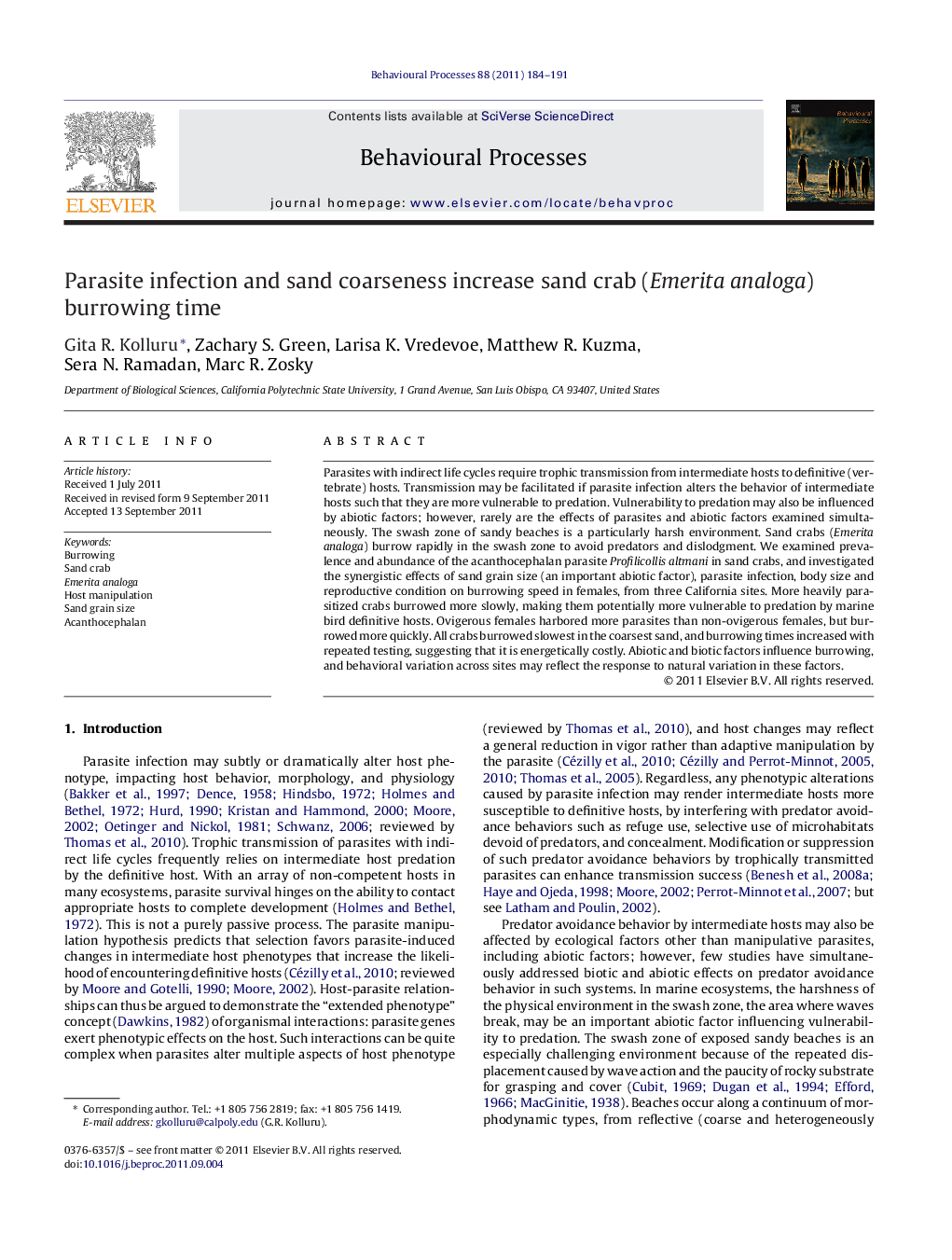| کد مقاله | کد نشریه | سال انتشار | مقاله انگلیسی | نسخه تمام متن |
|---|---|---|---|---|
| 2427076 | 1105941 | 2011 | 8 صفحه PDF | دانلود رایگان |

Parasites with indirect life cycles require trophic transmission from intermediate hosts to definitive (vertebrate) hosts. Transmission may be facilitated if parasite infection alters the behavior of intermediate hosts such that they are more vulnerable to predation. Vulnerability to predation may also be influenced by abiotic factors; however, rarely are the effects of parasites and abiotic factors examined simultaneously. The swash zone of sandy beaches is a particularly harsh environment. Sand crabs (Emerita analoga) burrow rapidly in the swash zone to avoid predators and dislodgment. We examined prevalence and abundance of the acanthocephalan parasite Profilicollis altmani in sand crabs, and investigated the synergistic effects of sand grain size (an important abiotic factor), parasite infection, body size and reproductive condition on burrowing speed in females, from three California sites. More heavily parasitized crabs burrowed more slowly, making them potentially more vulnerable to predation by marine bird definitive hosts. Ovigerous females harbored more parasites than non-ovigerous females, but burrowed more quickly. All crabs burrowed slowest in the coarsest sand, and burrowing times increased with repeated testing, suggesting that it is energetically costly. Abiotic and biotic factors influence burrowing, and behavioral variation across sites may reflect the response to natural variation in these factors.
► Sand crabs burrow to avoid predation and are intermediate hosts for a parasite.
► Parasite infection and very coarse sand increased burrowing times at three sites.
► Slower burrowing may increase bird predation, facilitating parasite transmission.
► Ovigerous crabs had more parasites but burrowed more rapidly regardless of sand type.
► Abiotic and biotic factors influence predator avoidance behavior in this system.
Journal: Behavioural Processes - Volume 88, Issue 3, November 2011, Pages 184–191